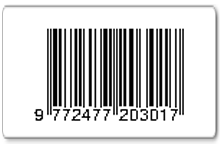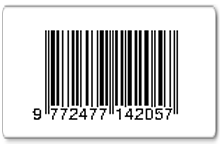Developing Critical Thinking of Grade 10 Students through Inquiry-Based STEM Learning
Abstract
Thematic approach in education is a way of holistic view in modern instructional practices. The 21st century learning needs students have ability and necessary skills, especially thinking critically than content focused. This action research aims to enhance critical thinking and learning achievement of grade 10 students through inquiry-based STEM learning. Twenty first students were participated by who had mean score lower than 70 percent of critical thinking. The research instruments consisted of 6 lesson plans, 20 items of critical thinking test with 4-multiple choice, interviewing form in teaching and learning environments, and observation during lesson plans implementation. Data were gathered and analyzed by descriptive statistics. The result showed that students who learned through inquiry-based STEM learning can increase their critical thinking to meet the criterion. Qualitative data indicated that they need more improvement in the diversity of learning methods as well as STEM education. Suggestion needs students to design and criticize in their working assignment.
Keywords
Full Text:
PDFReferences
Bybee, RW 2010, ‘Advancing STEM education: A 2020 vision’, Technology and Engineering Teacher, vol. 70, no. 1, pp. 30.
Chalkiadaki, A 2018, ‘A systematic literature review of 21st century skills and competencies in primary education’, International Journal of Instruction, vol. 11, no. 3, pp. 1-16.
Dostál, J, Wang, X, Nuangchalerm, P, Brosch, A & Steingartner, W 2017, ‘Researching computing teachers’ attitudes towards changes in the curriculum contents-An innovative approach or resistance?’, Proceeding of the 2nd International Conference on Informatics and Computing (ICIC APTIKOM 2017), Jayapura-Indonesia, 1-3 November 2017.
Dressel, P.L & Mayhew, L 1954, General education: Explorations in evaluation. Westport, CT: Greenwood press.
Duran, M & Sendag, S 2012, ‘A preliminary investigation into critical thinking skills of urban high school students: Role of an IT/STEM program’, Creative Education, vol. 3, no. 2, pp. 241.
English, LD 2017, ‘Advancing elementary and middle school STEM education’, International Journal of Science and Mathematics Education, vol. 15, no. 1, pp. 5-24.
Erdogan, N & Stuessy, CL 2015, ‘Modeling successful STEM high schools in the United States: An ecology framework’, International Journal of Education in Mathematics, Science and Technology, vol. 3, no. 1, pp. 77-92.
Hackling, MW 2016, ‘Think Piece: Preparing today’s children for the workplaces of tomorrow: The critical role of STEM education’, International Journal of Innovation in Science and Mathematics Education, vol. 23, no. 3, pp. 61-3.
Han, S, Capraro, R, & Capraro, MM 2015, ‘How science, technology, engineering, and mathematics (STEM) project-based learning (PBL) affects high, middle, and low achievers differently: The impact of student factors on achievement’, International Journal of Science and Mathematics Education, vol 13, no 5, pp. 1089-113.
Hinton, T, Yeoman, P, Carvalho, L, Parisio, M, Day, M, Byrne, S, Bell, A, Donohoe, K, Radford, J, Tregloan, P, Goodyear, P, & Poronnik, P 2014, ‘Participating in the communication of science: Identifying relationships between laboratory space designs and students’ activities’, International Journal of Innovation in Science and Mathematics Education, vol. 22, no. 5, pp. 30-42.
Hurst, C 2015, ‘Thinking big about mathematics, science, and technology: Effective teaching STEMs from big ideas’, International Journal of Innovation in Science and Mathematics Education, vol. 23, no. 3, pp. 11-21.
Ismail, NS, Harun, J, Zakaria, MAZM, & Salleh, SM 2018, ‘The effect of mobile problem-based learning application DicScience PBL on students’ critical thinking’, Thinking Skills and Creativity, vol. 28, pp. 177-95.
Jones, C & Pimdee, P 2017, ‘Innovative ideas: Thailand 4.0 and the fourth industrial revolution’, Asian International Journal of Social Sciences, vol. 17, no. 1, pp. 4-35.
Kemmis, S, McTaggart, R & Nixon, R (2013). The action research planner: Doing critical participatory action research. Springer Science & Business Media.
Lai, CS 2018, ‘Using inquiry-based strategies for enhancing students' STEM education learning’, Journal of Education in Science, Environment, and Health, vol 4, no 1, pp. 110-17.
Listiana, Abdurrahman, Suyatna, A & Nuangchalerm, P 2019, ‘The effect of Newtonian dynamics STEM-integrated learning strategy to increase scientific literacy of senior high school students’, Jurnal Ilmiah Pendidikan Fisika Al-Biruni, vol. 8, no. 1, pp. 43-52.
Marin, LM & Halpern, DF 2011, ‘Pedagogy for developing critical thinking in adolescents: Explicit instruction produces greatest gains’, Thinking Skills and Creativity, vol. 6, no. 1, pp. 1-13.
Mutakinati, L, Anwari, I & Kumano, Y 2018, ‘Analysis of students’ critical thinking skill of middle school through stem education project-based learning. Jurnal Pendidikan IPA Indonesia, vol. 7, no.1, pp. 54-65.
Nuangchalerm, P 2009, ‘Preservice teachers perception about nature of science’, The Social Sciences, vol. 4, no. 5, pp. 463-7.
Nuangchalerm, P, & Prachagool 2019, ‘Preferred and actual opinions toward inquiry-based instruction of primary science teachers in the rortheast of Thailand, Jurnal Penelitian dan Pembelajaran IPA, vol, 5, no. 1, pp. 1-15.
Parappilly, M, Siddiqui, S, Zadnik, M, Shapter, J & Schmidt, L 2013, ‘An inquiry-based approach to laboratory experiences: Investigating students' ways of active learning’, International Journal of Innovation in Science and Mathematics Education, vol. 21, no. 5, pp. 42-53.
Polyiem, T, Nuangchalerm, P & Wongchantra, P, 2011, ‘Learning achievement, science process skills, and moral reasoning of ninth grade students learned by 7E learning cycle and socioscientific issues-based learning’, Australian Journal of Basic and Applied Science, vol. 5, no. 10, pp. 257-64.
Prachagool, V & Nuangchalerm, P 2019, ‘Investigating the nature of science: An empirical report on the teacher development program in Thailand’, Jurnal Pendidikan IPA Indonesia, vol. 8, no. 1, pp. 32-8.
Prachagool, V, Nuangchalerm, P, Subramaniam, G & Dostál, J 2016, ‘Pedagogical decision making through the lens of teacher preparation program’, Journal for the Education of Gifted Young Scientists, vol.4, no. 1, pp. 41-52.
Reeve, EM 2015, STEM thinking!’, Technology and Engineering Teacher, vol. 75, no. 4, pp. 8-16.
Ring-Whalen, E, Dare, E, Roehrig, G, Titu, P & Crotty, E 2018, ‘From conception to curricula: The role of science, technology, engineering, and mathematics in integrated STEM units’, International Journal of Education in Mathematics, Science and Technology, vol. 6, no. 4, pp. 343-62.
Shahali, EHM, Halim, L, Rasul, MS, Osman, K & Zulkifeli, MA 2017, ‘STEM learning through engineering design: Impact on middle secondary students’ interest towards STEM’, EURASIA Journal of Mathematics, Science and Technology Education, vol 13, no 5, pp. 1189-211.
Storksdieck, M 2016, ‘Critical information literacy as core skill for lifelong STEM learning in the 21st century: reflections on the desirability and feasibility for widespread science media education’, Cultural Studies of Science Education, vol. 11, no. 1, pp. 167-82.
Toma, RB & Greca, IM 2018, ‘The effect of integrative STEM instruction on elementary students’ attitudes toward science’, Eurasia Journal of Mathematics, Science and Technology Education, vol. 14, no. 4, pp. 1383-95.
Wartono, W, Hudha, MN & Batlolona, JR 2018, How are the physics critical thinking skills of the students taught by using inquiry-discovery through empirical and theoretical overview’, Eurasia Journal of Mathematics, Science and Technology Education, vol. 14, no 2, pp. 691-97.
Wilson, R & Mack, J 2014, ‘Declines in high school mathematics and science participation: Evidence of students’ and future teachers’ disengagement with maths’, International Journal of Innovation in Science and Mathematics Education, vol. 22, no. 7, pp. 35-48.
Wechsler, SM, Saiz, C, Rivas, SF, Vendramini, CMM, Almeida, LS, Mundim, MC & Franco, A 2018, ‘Creative and critical thinking: Independent or overlapping components?’, Thinking Skills and Creativity, vol. 27, pp. 114-22.
Xie, Y, Fang, M & Shauman, K 2015, ‘STEM education’, Annual Review of Sociology, vol 41, pp. 331-57.
Zeidler, DL 2016, ‘STEM education: A deficit framework for the twenty first century? A sociocultural socioscientific response’, Cultural Studies of Science Education, vol. 11, no. 1, pp. 11-26.
DOI: http://dx.doi.org/10.30870/jppi.v5i2.5486
Refbacks
- There are currently no refbacks.
Copyright (c) 2019 Jurnal Penelitian dan Pembelajaran IPA

This work is licensed under a Creative Commons Attribution 4.0 International License.
Jurnal Penelitian dan Pembelajaran IPA is licensed under a Creative Commons Attribution 4.0 International License
Copyright © 2025 Jurnal Penelitian dan Pembelajaran IPA. All rights reserved.






